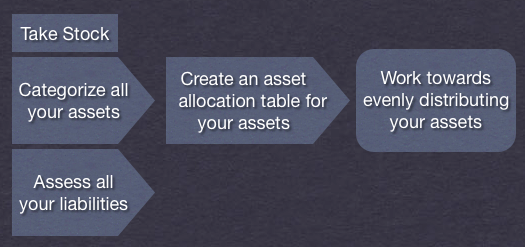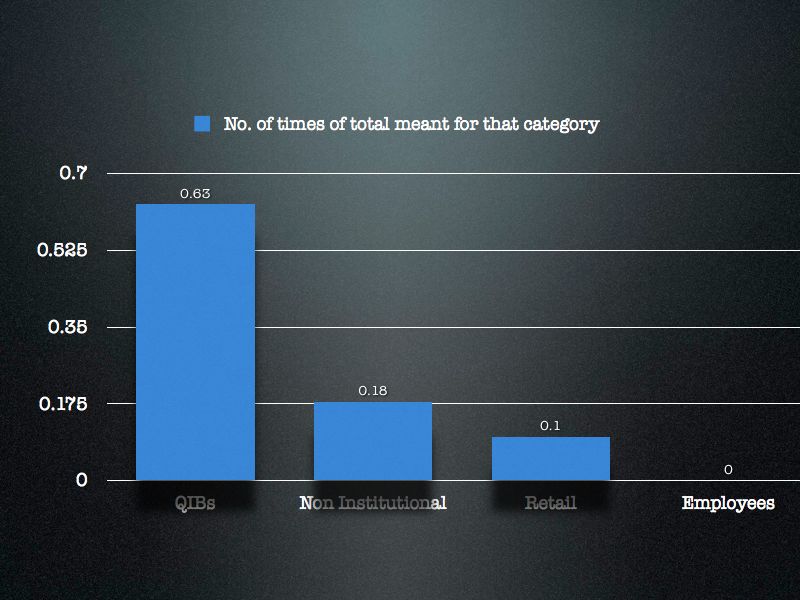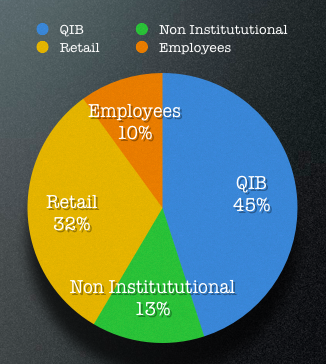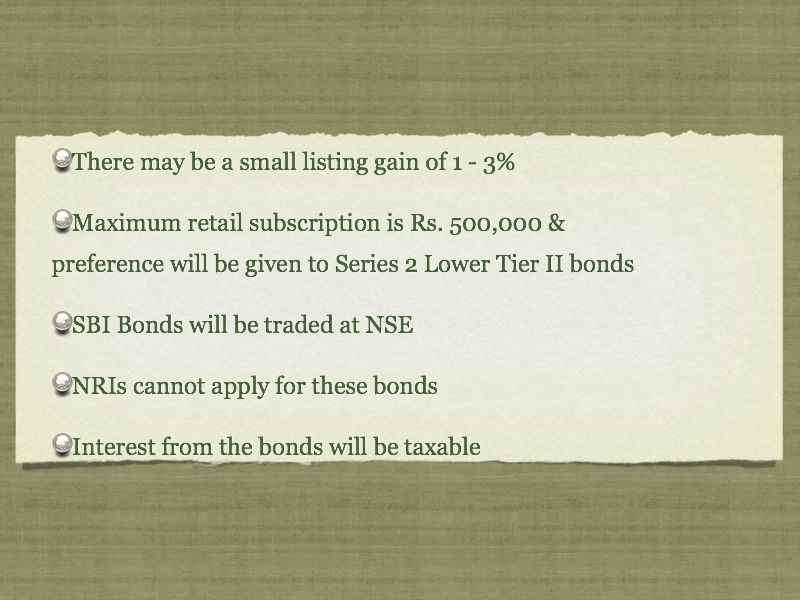I got a comment about how the yield for the L&T Finance Bonds have been calculated and though I have a slightly longer post scheduled on the topic later; I thought I’d do a quick one for now.
There are 4 series of L&T Finance Bonds, and two of them offer cumulative returns while two others offer annual returns.
L&T Finance Bonds: Cumulative Option
Let’s first look at the cumulative ones first, which is series 2 & 4. Cumulative series mean that you don’t get a payment every year, but get a lump-sum at the end of the bond buyback period.
In L&T Finance Bond’s case – Series 2 is 7.75% for 7 years, and Series 4 is 7.50% for 5 years, so using compound interest – you can calculate the amount after 5 and 7 years as follows:
|
Cumulative Option |
| Series 2 |
Series 4 |
| Principal |
1000 |
1000 |
| Interest Rate |
7.75% |
7.50% |
| Time in years |
7 |
5 |
| Amount at buyback period |
1686.25 |
1435.63 |
From the above table you see the amount at the end of the buyback period in both the series. Now keep in mind that these are tax saving infrastructure bonds, so your effective purchase price is lesser than the face value of the bond. If you fall in the 30.6% tax bracket, then your taxable income reduces by the amount of L&T bonds you buy (up to a cap of 20,000).
So based on your tax rate, you need to calculate your effective price, and find out at what rate you need to invest that amount, and reinvest the interest earned on it to come at the final buyback amount (1,686.25 and 1435.63) calculated above. You can use the CAGR calculator on this site to help you arrive at the yield of these two series. That page has details on how this is calculated as well.
|
Cumulative Option |
|
Series 2 |
Series 4 |
| Principal |
1000 |
1000 |
| Tax Rate |
30.90% |
30.90% |
| Effective Purchase Price |
691.00 |
691.00 |
| Amount at buyback period |
1686.25 |
1435.63 |
| CAGR |
13.59% |
15.75% |
|
|
|
|
The last row in the table above contains the CAGR or yield on both these series, and what this shows you is that if you had invested Rs. 691 in Series 2 for 7 years at 13.59% compounded annually, you would’ve gotten 1,686.25 at the end of 7 years, which is what the yield of this series is.
L&T Finance Bonds: Annual Interest Option
In this case you get interest paid out to you every year, so you use a concept called Yield To Maturity (YTM). This formula takes into account the discounted cash flow, effectively seeing how much money you will get in total, and what it’s worth today. It also assumes that whatever money you get will be reinvested with the coupon rate or 7.75% in Series 1 or 7.50% in Series 4.
You can calculate the YTM using an online calculator or Excel. Plug in the Face Value, Market Price, Coupon Rate and Time in the calculator, and it will show you the YTM.
Here is how that table will look like.
|
Cumulative Option |
|
Series 1 |
Series 3 |
| Principal |
1000 |
1000 |
| Tax Rate |
30.90% |
30.90% |
Market Price /
Effective Purchase Price |
691.00 |
691.00 |
| Coupon Rate |
7.75% |
7.50% |
| Time |
7 years |
5 years |
| Yield to Maturity |
15.23% |
17.20% |
The 17.20% number that you see in Series 3 basically means that the cash flows from this bond discounted at 17.20% will equal the present value of future cash flows at the same rate.
To come up with the 17.20% number you need to use Excel or an online calculator or something, but then after that you can take the cash flows for each period, discount it with the 17.20% and see what the present value of each amount in each period is, and the sum of those cash flows at 17.20% should be 0. This is just for those of you interested in diving further into the calculation.
Here is how the Series 3 table of what I am talking about look like.
|
Series 3
Cashflows |
Yield |
1 + Yield |
Time |
Multiplier
(Yield ^ Time) |
Present Value
(Cashflows / Multiplier) |
| Time 0 |
-691 |
17.2 |
1.172 |
– |
– |
-691 |
| Time 1 |
75 |
17.2 |
1.172 |
1 |
1.172 |
63.993174 |
| Time 2 |
75 |
17.2 |
1.172 |
2 |
1.37358 |
54.601684 |
| Time 3 |
75 |
17.2 |
1.172 |
3 |
1.60984 |
46.588468 |
| Time 4 |
75 |
17.2 |
1.172 |
4 |
1.88673 |
39.751252 |
| Time 5 |
1075 |
17.2 |
1.172 |
5 |
2.21125 |
486.15013 |
|
|
|
|
|
Sum |
0.08 |
If you look at the last column of the above table – Present Value (Cashflows / Multiplier) that’s the column that shows you the present value of each of these payments at the discount rate.
So, 63.99 invested at 17.2% for 1 year becomes 75; 39.75 invested for 4 years at 17.20 will be 75 and so on.
So, this is basically how the yield for this L&T Finance bond is being calculated, and also the IDFC Infrastructure bond and you can read more about NPV, IRR and YTM at Wiki to get a better understanding of this calculation.
I hope this helped those of you who were trying to figure out the calculation, and if I’ve made any mistakes or if you have any other questions or comments please let me know.
And one last thing, these calculations don’t take into account taxes paid on interest payments; that’s just the way yields are calculated – pretax.
Click here to read the entire review of the L&T Finance Bonds.





Whether the Bond will list at a premium because as per Bond Valuation theory Bond Value is a function of interest rate. So they are offering 9.5% which is 2% higher than the rate offered on FDs by Banks so we will get 2% higher for 10 years, which if we discount it @7.5% we will see its present value comes to around Rs 14 per 100. So I expect the bond to list @ 14% premium. So can anyone advise me whether I am write or wrong, because I have never invested in Nonds before.
REPLY